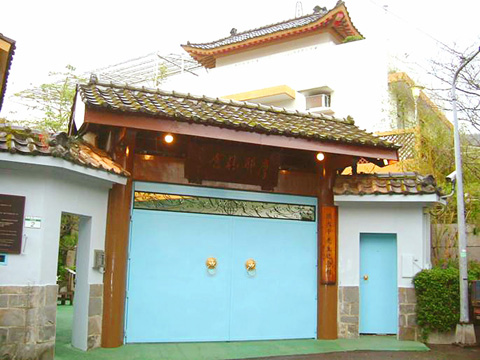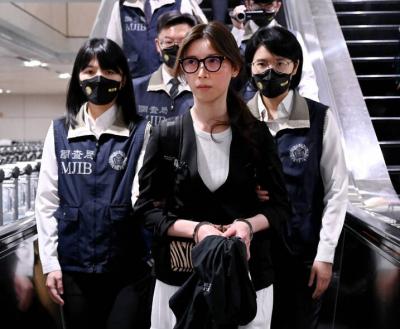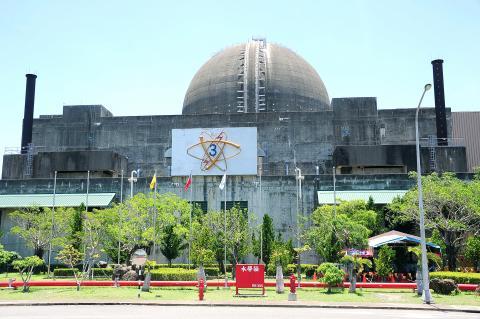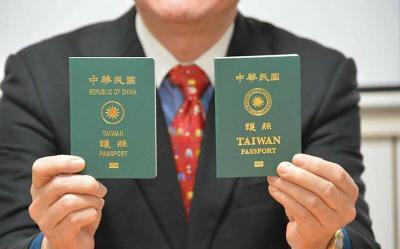The residence of Chang Ta-chien (張大千), one of Asia's most influential artists, was declared a municipal monument last week by Taipei City's Department of Cultural Affairs for its cultural and historical significance in representing the artist's taste and lifestyle.
The two-story residence, also known as “the Abode of Maya” (摩耶精舍), was designed by Chang and completed in 1978. The building occupies approximately 1,911m², with a Western courtyard-style structure complimenting Chinese-style gardens.
Chang’s family donated the residence to the National Palace Museum following his death in 1983. The museum converted it into a memorial to the artist, with everything in the residence preserved exactly as it was during Chang’s lifetime to give visitors a glimpse of the home life of the painter.

PHOTO: PROVIDED BY TAIPEI CITY GOVERNMENT
Teng Wen-tsung (鄧文宗), Taipei City’s Department of Cultural Affairs division chief, said the city’s municipal monument review committee had decided to list the residence as a monument five years ago, but a dispute over the property rights to some of the house’s walls delayed the process.
“Committee members agreed that Chang’s status as a world-renowned painter made the Abode of Maya a great historical and cultural asset to the city,” Teng said.
Teng said the construction and decoration of the residence, designed by Chang, expressed his aesthetics in concrete form. His achievements in the art world further made it meaningful to recognize his residence as a municipal monument.
Su Yu-chuan (蘇鈺娟), another section chief at the department, said the house had been well-preserved by both Chang’s family and then the National Palace Museum.
The displays in the rooms, from an award given to the painter in 1982 by the government to photos he took with Pablo Picasso to paintings and calligraphy, were still on the walls in the living room.
The time on the wall clock hung in the living room, which stopped at 8:15am, marked the master’s time of death in remembrance of him, Su said.
“Plum Blossom Hill” in the courtyard garden is the burial site of the great painter. The garden also features several pavilions overlooking Waishuangxi (外雙溪) and luxurious greenery.
Additional attractions include the colorful carp in the ponds, the lively gibbons on the second floor and cranes in the aviary — all portrayed by Chang in his paintings.
Born in Sichuan Province in 1899, Chang came of age when Western art techniques were just beginning to infiltrate Chinese art.
Unlike many of his peers who proceeded to emulate European artists and steered radically away from tradition, Chang combined traditional Chinese artwork with Western elements to create his own style.
One of Chang’s most recognized series of works were his paintings of the Tang dynasty Buddhist cliff and cave-face paintings of Dunhuang in China’s Gansu Province.
The artist traveled around the world starting in 1948 and had lived in Hong Kong, Brazil and the US before coming to Taiwan in 1977. He never returned to China.
The residence is now open to the public for visit. All of the artist’s paintings on the wall, however, are replicas because of the difficulty in preserving the original pieces in the humid weather of the Waishuangxi area, Teng said.
The original pieces are now stored at the National Palace Museum. Most of Chang’s older works are on display in China’s Sichuan Provincial Museum.

A fugitive in a suspected cosmetic surgery fraud case today returned to Taiwan from Canada, after being wanted for six years. Internet celebrity Su Chen-tuan (蘇陳端), known as Lady Nai Nai (貴婦奈奈), and her former boyfriend, plastic surgeon Paul Huang (黃博健), allegedly defrauded clients and friends of about NT$1 billion (US$30.66 million). Su was put on a wanted list in 2019 when she lived in Toronto, Canada, after failing to respond to subpoenas and arrest warrants from the Taipei District Prosecutors’ Office. Su arrived at Taiwan Taoyuan International Airport at 5am today on an EVA Air flight accompanied by a

COVID-19 infections have climbed for three consecutive weeks and are likely to reach another peak between next month and June, the Centers for Disease Control (CDC) said yesterday. Weekly hospital visits for the disease increased by 19 percent from the previous week, CDC Epidemic Intelligence Center Director Guo Hung-wei (郭宏偉) said. From Tuesday last week to yesterday, 21 cases of severe COVID-19 and seven deaths were confirmed, and from Sept. 1 last year to yesterday, there were 600 cases and 129 deaths, he said. From Oct. 1 last year to yesterday, 95.9 percent of the severe cases and 96.7 percent of the deaths

Restarting the No. 2 reactor at the Ma-anshan Nuclear Power Plant would take up to 18 months, Minister of Economic Affairs J.W. Kuo (郭智輝) said today. Kuo was answering questions during a meeting of the Legislative Yuan’s Economics Committee, where legislators are considering amendments to the Renewable Energy Development Act (再生能源發展條) amid concerns about the consequences of the Pingtung County reactor’s decommissioning scheduled for May 17. Its decommissioning is to mark the end of Taiwan’s nuclear power production. However, Chinese Nationalist Party (KMT) lawmakers have proposed an amendment to the Nuclear Reactor Facilities Regulation Act (核子反應器設施管制法) that would extend the life of existing

The Ministry of Foreign Affairs yesterday demanded that Somalia reverse its decision prohibiting Taiwanese passport holders from entering or transiting through the country. Somalia said it is following the “one China” principle based on UN Resolution 2758. The ministry said that Somalia is misinterpreting the resolution under China’s instigation, creating a false impression that Taiwan is subordinate to China. The Somali Civil Aviation Authority told airlines on Tuesday last week that starting today, any passengers with passports or travel documents issued from Taiwan or its affiliated institutions would not be allowed to enter or transit through Somalia. The decision comes as Taiwan is boosting